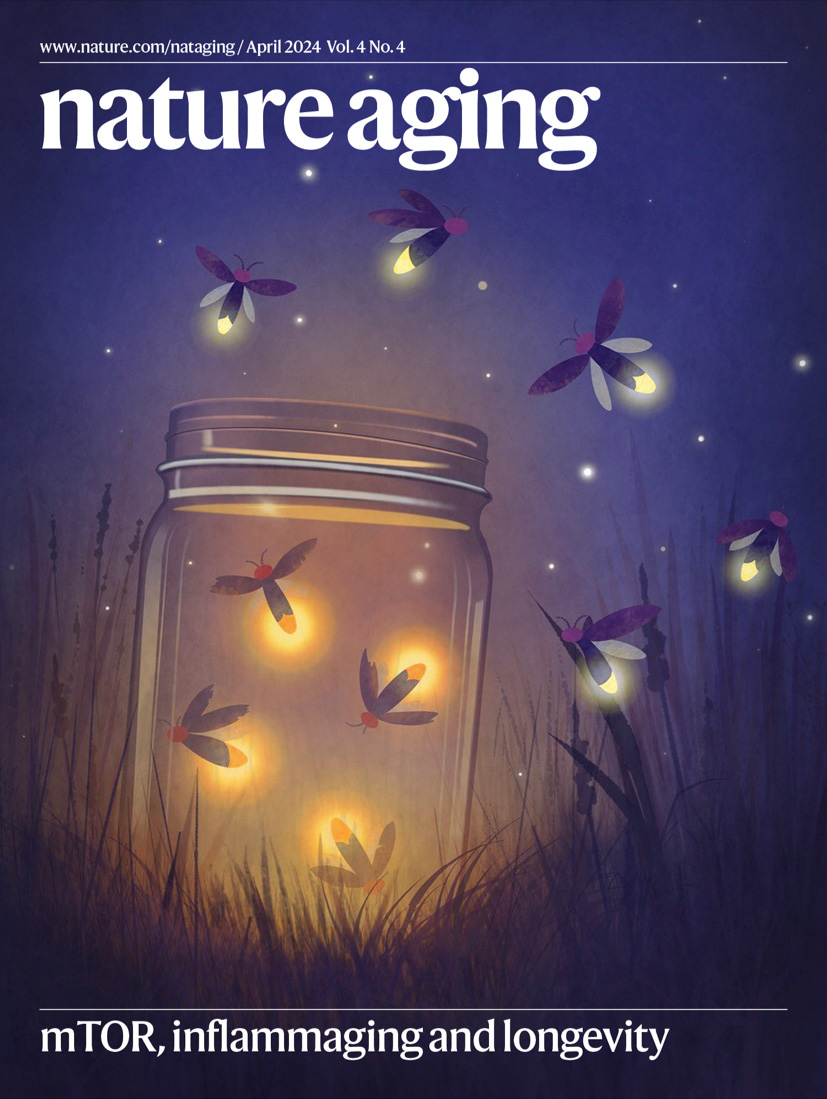How rapamycin slows aging… see paper below.
Also, read about HSC aging, partial reprogramming in the mammalian brain, the STEP trial, ovarian aging and much more.
In this issue, Pingze Zhang et al. reveal that S6K suppression in the fruit-fly fat body mediates the longevity effects of rapamycin, and uncover a sex-dimorphic link through to lysosome morphology and inflammation, via Syntaxin 13.
The cover image conceptualizes the link to inflammaging by depicting aged flies as confined to a jar (representing the nuclear localization of the Drosophila NFκB-like transcription factor Relish), emitting brighter light (representing upregulation of inflammatory mediators).
https://www.nature.com/nataging/volumes/4/issues/4
Open Access:
Suppression of target of rapamycin complex 1 (TORC1) by rapamycin ameliorates aging in diverse species. S6 kinase (S6K) is an essential mediator, but the mechanisms involved are unclear. Here we show that activation of S6K specifically in Drosophila fat-body blocked extension of lifespan by rapamycin, induced accumulation of multilamellar lysosomes and blocked age-associated hyperactivation of the NF-κB-like immune deficiency (IMD) pathway, indicative of reduced inflammaging. Syntaxin 13 mediated the effects of TORC1–S6K signaling on lysosome morphology and inflammaging, suggesting they may be linked. Inflammaging depended on the IMD receptor regulatory isoform PGRP-LC, and repression of the IMD pathway from midlife extended lifespan. Age-related inflammaging was higher in females than in males and was not lowered in males by rapamycin treatment or lowered S6K. Rapamycin treatment also elevated Syntaxin 12/13 levels in mouse liver and prevented age-related increase in noncanonical NF-κB signaling, suggesting that the effect of TORC1 on inflammaging is conserved from flies to mammals.
